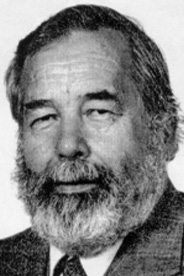You are here: American University College of Arts & Sciences Psychology Conditioned Taste Aversion
Conditioned Taste Aversion Research
Welcome to Conditioned Taste Aversion, an Annotated Bibliography, maintained by the Psychopharmacology Laboratory at American University, Washington, DC.
The Searchable Bibliographic Database of CTA records dates to 1940. In 1976, we published the first of three bibliographies on conditioned taste aversion learning. In this initial publication (see Riley and Baril, 1976), we listed and annotated 403 papers in this field. Subsequent lists published in 1977 (Riley and Clarke, 1977) and 1985 (Riley and Tuck, 1985) listed 632 and 1373 papers, respectively. Since that time, we have maintained a bibliography on taste aversion learning utilizing a variety of journal and on-line searches as well as benefiting from the generous contribution of preprints, reprints and PDF files from many colleagues.

CTA History
In the mid 1950s, John Garcia and his colleagues at the Radiological Defense Laboratory at Hunters Point in San Francisco assessed the effects of ionizing radiation on a myriad of behaviors in the laboratory rat: some of which behaviors appeared to violate the basic tenets of traditional learning theory and, along with a number of other behavioral phenomena, introduced the concept of biological constraints on learning that forced a reconceptualization of the role evolution played in the acquisition of behavior.
In the mid 1950s, John Garcia and his colleagues at the Radiological Defense Laboratory at Hunters Point in San Francisco assessed the effects of ionizing radiation on a myriad of behaviors in the laboratory rat. One of their behavioral findings was that radiated rats avoided consumption of solutions that had been present during radiation, presumably due to the association of the taste of the solution with the aversive effects of the radiation. These results were published in Science and introduced to the literature the phenomenon of conditioned taste aversion learning (or the Garcia Effect). Subsequently, Garcia and his colleagues demonstrated that such learning appeared unique in a number of respects, including the fact that these aversions were acquired often in a single conditioning trial, selectively to gustatory stimuli and even when long delays were imposed between access to the solution and administration of the aversive agent. Together, these unique characteristics appeared to violate the basic tenets of traditional learning theory and along with a number of other behavioral phenomena (e.g., bird song learning, species-specific defense reactions, tonic immobility and schedule-induced polydipsia) introduced the concept of biological constraints on learning that forced a reconceptualization of the role evolution played in the acquisition of behavior (Garcia and Ervin, 1968; Revusky and Garcia, 1970; Rozin and Kalat, 1971).
CTA Literature
In 1976, we published the first of three bibliographies on conditioned taste aversion learning. In this initial publication (see Riley and Baril, 1976), we listed and annotated 403 papers in this field. Subsequent lists published in 1977 (Riley and Clarke, 1977) and 1985 (Riley and Tuck, 1985) listed 632 and 1373 papers, respectively. Since that time, we have maintained a bibliography on taste aversion learning utilizing a variety of journal and on-line searches as well as benefiting from the generous contribution of preprints, reprints and pdf files from many colleagues. To date, the number of papers on conditioned taste aversion learning is approaching 4,000. The present searchable database lists these papers and provides a mechanism for searching the articles according to a number of search functions. Specifically, it was constructed to provide the reader access to these articles via a variety of search terms, including Author(s), Key Words, Date, Article Title and Journal. One can search for single or multiple items within any specific category. Further, one can search a single or combination of categories. The database is constantly being updated, and any feedback and suggestions are welcome and can be sent to alriley@american.edu.
Recent Entries
Riley, A.L.; Manke, H.M.; Huang, S., 2022
See complete record: 3960
Arthurs J; Lin J-Y; Reilly S, 2018
See complete record: 3958
Aonuma H; Totani Y; Sakakibara M; Lukowiak K; Ito E, 2018
See complete record: 3957
Aonuma H; Totani Y; Kaneda M; Nakamura R; Watanabe T; Hatakeyma D; Dyakonova VE; Lukowiak K; Ito E, 2018
See complete record: 3956
Angulo R, 2018
See complete record: 3955
